Time for the annual ‘How to Photograph Winter’ report, something that is written every year and the same thing is written every time. So lets get the obvious suggestions out of the way with little else said: it’s cold so wear warm clothes- hat, gloves and boots; don’t take your camera from a warm humid place to the cold, dry outside. It’ll fog up and you’ll be unhappy; Beware of contrasty full sun scenes and check your histogram religiously; footing is tricky so be careful where you walk.
Now that the obvious stuff is out of the way here are some less obvious but probably more important suggestions to get your best winter (and I mean snow) photography.
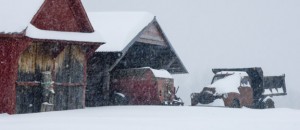 1. Go out while it is snowing. Use a lens hood, keep your camera tucked under your parka, pay attention where you walk but go out. Your camera will be as tolerant to the conditions as you are so don’t worry. Going out while it is snowing or blowing makes for great pictures- ones others are unlikely to have.
1. Go out while it is snowing. Use a lens hood, keep your camera tucked under your parka, pay attention where you walk but go out. Your camera will be as tolerant to the conditions as you are so don’t worry. Going out while it is snowing or blowing makes for great pictures- ones others are unlikely to have.
2. Be very careful using your tripod in snow. This is what can happen- you extend the legs, separate them and then plunge the tripod into the snow. What happens is you’ll have a bi-pod in one hand and a mono-pod in the other because the snow will force the legs even farther apart, past their breaking point. The solution is to not pull the legs apart very far so when the tripod is thrust into the snow the spread is not so costly.
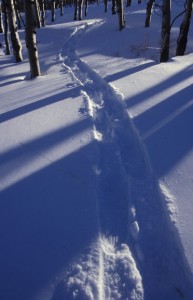 3. Be aware of your path as your wander around in the snow, it can be a great compositional element for your image. Whenever I am out and I see a nice area ahead of me I will walk deliberately to make a pleasing path. Snake around some trees, play with a fence, crash through a drift- be playful.
3. Be aware of your path as your wander around in the snow, it can be a great compositional element for your image. Whenever I am out and I see a nice area ahead of me I will walk deliberately to make a pleasing path. Snake around some trees, play with a fence, crash through a drift- be playful.
4. Be aware of shadows as well. If you go out on a cloudy bright day (my favorite light for snow) there are always great shadows especially late and early in the day. Sometimes the shadows can be a nice foreground and sometimes they can be the entire composition. Shadows and your trail are even better together!
5. Steams are great in the winter. Early winter the water is open but the banks and surrounding areas are all snowy making for really nice pics. Later in winter the stream becomes more and more covered with ice and snow. There are often very pretty snowy pillows on rocks and magnificent icicles and ice plates on the edges of the open water.
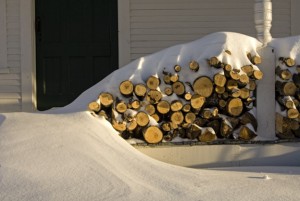 6. Don’t forget the human environment and humans too! Barns, fences, wood piles, gardens, all look great when covered by snow. People are also, I think, more photogenic in winter when they are all covered up in heavy clothes and their expressions often match the weather at the time. Kids having fun in the snow make for great action shots.
6. Don’t forget the human environment and humans too! Barns, fences, wood piles, gardens, all look great when covered by snow. People are also, I think, more photogenic in winter when they are all covered up in heavy clothes and their expressions often match the weather at the time. Kids having fun in the snow make for great action shots.
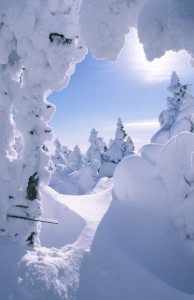 7. If you can’t find winter (snow) here is a trick I have used a number of times. Go to a ski area and ride the lifts to the very top where winter is likely hiding. Ski areas charge relatively little for a non-skier to ride the lifts. Bring along snowshoes and stay out of the way but you should have the entire mountain top to photograph. If you live near a ski area watch the weather and try to wait for a time when the summit trees are heavily flocked with snow. Oh, you don’t have to walk down. You can ride the lift back down just like you rode it up.
7. If you can’t find winter (snow) here is a trick I have used a number of times. Go to a ski area and ride the lifts to the very top where winter is likely hiding. Ski areas charge relatively little for a non-skier to ride the lifts. Bring along snowshoes and stay out of the way but you should have the entire mountain top to photograph. If you live near a ski area watch the weather and try to wait for a time when the summit trees are heavily flocked with snow. Oh, you don’t have to walk down. You can ride the lift back down just like you rode it up.
8. And don’t forget animals in winter. Birds at birdfeeders are great subjects for winter photography. Put up a photogenic perch near a feeder and if you have more than one feeder up take them all down so birds are forced to go to the feeder you want and to your perch. Focus on the perch, be patient and you’re good to go. Also, mammals look great in the cold months because their pelts are the thickest and most luxurious looking. Triple D Game farm is the place for the best winter mammal photography- snow leopards, raccoons, wolves, mountain lions. What are you waiting for?
[nggallery id=31]

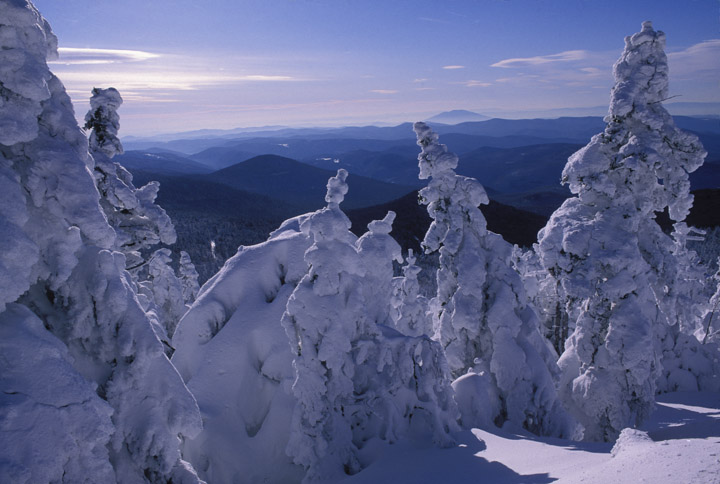
David,
I hope to participate in the Vermont workshop this year. I would plan to drive and spend addtional time. I would either travel early, and let Joyce fly home before the workshop starts; or, participate in the workshop, and plan for Joyce to fly and meet me there for an extended time.
Your thoughts, please, on better timing considering the season there.
Happy New Year.
Ike
HI Ike
Miss the smell of a working dairy farm do you? Its basically impossible to predict if the color is going to be better before or after the October. This year the color was better in very early october and then declined but that is unusual. If you lingered afterward you could go and really work your favorite places we visited in the workshop. The odds are that the color will be okay before the workshop, great during the workshop and good after the workshop. In actuality, you really con’t go wrong.
Glad I could be so unhelpful!
Happy New Year to you too, Ike
d
Yes.
There is no experience like being slapped in the face by a manure tail(frozen) ona 26 degree morning. The experience lasts all day.